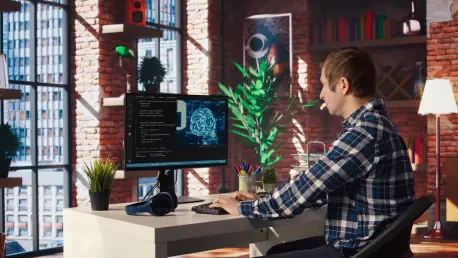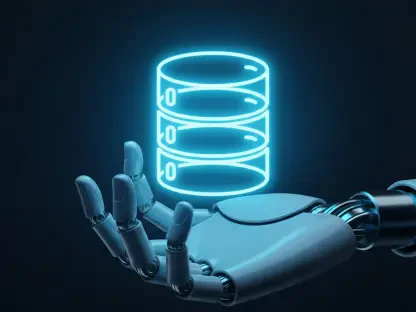In an era where technology evolves at breakneck speed, a staggering 58% of developers now rely on Python as their primary programming language, signaling a seismic shift in the software development industry. This statistic, drawn from a comprehensive global survey of over 49,000 developers across 177 countries, underscores the profound influence of versatile tools and emerging innovations like artificial intelligence (AI). As the industry navigates a complex balance between rapid advancements and the need for reliability, these trends offer a window into the priorities, challenges, and aspirations of developers worldwide, setting the stage for a deeper exploration of what drives this dynamic field.
Overview of the Global Developer Survey
The annual Stack Overflow Developer Survey stands as a cornerstone for understanding the pulse of the software development community, capturing insights from a vast and diverse pool of participants. Spanning 62 questions and 314 technologies, the survey reflects the experiences of developers from varied backgrounds, offering a detailed perspective on tool adoption, workplace dynamics, and emerging technologies. This year’s findings highlight the growing reliance on platforms like Stack Overflow, with 82% of respondents engaging at least a few times monthly, affirming its role as an indispensable resource for problem-solving and knowledge sharing.
Beyond mere numbers, the survey paints a vivid picture of an industry in transition, grappling with the integration of cutting-edge tools while maintaining stability in core practices. Key areas of focus include the shift in programming language preferences, the role of AI in reshaping workflows, and the evolving nature of work environments. These elements collectively provide a roadmap for understanding how developers adapt to change and what tools they trust to drive innovation.
Key Trends in Technology Adoption
Python’s Rising Prominence
Among the most striking revelations is Python’s continued ascent, now embraced by 58% of developers, marking a significant 7-percentage-point rise over recent years. This growth cements Python’s status as a go-to language for a range of applications, from data science to web development. Meanwhile, foundational technologies like JavaScript, HTML/CSS, SQL, and Bash/Shell retain their relevance, forming a robust backbone for diverse coding projects.
Development environments also show consistency, with Visual Studio Code and Visual Studio holding their positions as top choices for the fourth consecutive year. Collaboration tools, however, reveal a shift, as GitHub overtakes Jira as the preferred platform for project management and version control. Additionally, Markdown files have emerged as the leading choice for documentation, reflecting a preference for simplicity and accessibility in team workflows.
AI’s Growing Footprint and Mixed Reception
AI tools have woven themselves into the fabric of modern development, with 84% of developers either using or planning to adopt them, and nearly half relying on them daily. OpenAI’s GPT models dominate the landscape, utilized by 81% of respondents, while Anthropic’s Claude Sonnet earns notable admiration, particularly among seasoned professionals. This widespread adoption signals a transformative potential in how code is written and problems are solved.
Yet, enthusiasm for AI is tempered by skepticism, as only 3% of developers express high confidence in AI-generated outputs, and 46% admit to some level of distrust. While AI agents show promise—69% of users report productivity boosts and 70% note reduced task times—their adoption remains limited, with 38% of developers having no plans to use them. Challenges such as near-correct outputs requiring extensive debugging and minimal impact on team collaboration further highlight the technology’s growing pains.
Challenges Facing Developers Today
The integration of AI, while promising, introduces significant hurdles, particularly around trust and reliability. Many developers struggle with outputs that appear functional but harbor subtle errors, necessitating meticulous review and adjustment. This underscores a broader concern: the risk of over-reliance on automated tools without sufficient human oversight or a deep understanding of underlying code structures.
Beyond AI, developers face decisions about abandoning certain technologies, often driven by security and privacy issues, prohibitive costs, or the availability of superior alternatives. Usability and outdated features also play a role in these choices, reflecting an industry that demands constant evolution. Balancing the allure of innovation with the need for dependable, secure solutions remains a persistent challenge for many in the field.
Workplace dynamics add another layer of complexity, as developers navigate a spectrum of remote, hybrid, and in-person arrangements. These models impact productivity and satisfaction in varied ways, with some thriving in flexible setups while others grapple with isolation or communication barriers. Addressing these disparities is crucial for fostering environments where talent can flourish.
Workplace Shifts and Community Connections
Remote work continues to define the industry, particularly in the United States, where 45% of developers operate fully from home, compared to a global average of 32% remote and 18% in-person. Hybrid arrangements bridge the gap for many, offering a blend of autonomy and collaboration. This diversity in work setups reflects an ongoing experiment in optimizing developer well-being and output.
Job satisfaction shows a positive trend, climbing to 24% of developers expressing contentment in their roles, up from previous years. This incremental improvement suggests that adjustments in work conditions, tool access, or role clarity may be resonating with the workforce. Such shifts are vital for retaining talent in a competitive landscape.
Community platforms remain a lifeline for learning and collaboration, with YouTube, GitHub, Reddit, and Stack Exchange serving as key hubs. Notably, younger developers lean toward interactive formats like coding challenges and live discussions, diverging from traditional content consumption. Demographic insights further reveal a workforce dominated by full-stack developers, a rising presence of architect roles, and a wide range of experience levels, painting a picture of a vibrant, multifaceted community.
Looking Ahead: Innovation with Caution
As the industry moves forward, the cautious embrace of AI signals a future where productivity gains must be weighed against reliability concerns. Emerging technologies like Rust, paired with highly admired tools like Cargo (favored by 71% of respondents), hint at potential disruptions in established markets. These developments suggest a landscape ripe for new leaders and methodologies.
Developer preferences are also evolving, with younger coders gravitating toward dynamic, engaging content over static resources. Workplace flexibility and global trends, such as varying adoption rates of remote models, will likely continue to shape how teams operate and innovate. These shifts point to an adaptable industry, responsive to both technological and cultural currents.
The critical task ahead lies in striking a balance between leveraging cutting-edge tools and preserving security, trust, and human expertise. As AI and other innovations mature, their integration into daily workflows must be guided by rigorous standards and a commitment to understanding their limitations. This approach will ensure that progress does not come at the expense of foundational principles.
Final Reflections and Next Steps
Looking back on the insights gathered, the software development industry reveals a dual commitment to embracing Python’s dominance and cautiously integrating AI into everyday practices. The survey captures a community navigating workplace transformations and relying on trusted platforms for growth and collaboration. These findings paint a portrait of resilience amid rapid change.
Moving forward, stakeholders must prioritize frameworks that enhance trust in AI outputs, perhaps through improved validation tools or standardized testing protocols. Investing in education around deep code comprehension can empower developers to harness innovations without sacrificing control. Additionally, fostering flexible work environments that cater to diverse needs will be essential for sustaining satisfaction and productivity.
As the field progresses, a collaborative effort between developers, companies, and tool creators should focus on refining AI’s role to maximize benefits while minimizing risks. Exploring emerging technologies like Rust and supporting community-driven learning platforms can further enrich the ecosystem. By addressing these areas with deliberate action, the industry can chart a path that honors both innovation and stability.









